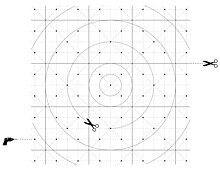Type a search term to find related articles by LIMS subject matter experts gathered from the most trusted and dynamic collaboration tools in the laboratory informatics industry.
OpenStructures is an open source modular construction model based on a shared geometrical grid, called the OS grid. It was conceived by designer Thomas Lommée, and first demonstrated at the Z33, a house for contemporary art.[1][2] According to Lommee, the OpenStructures project explores the possibility of a modular system where "everyone designs for everyone." OpenStructures is developing a database where anyone can share designs which are in turn available for download by the public. Each component design in the OS system will feature previously designed OS parts that were used to create it. In addition, each part will feature component designs that can be made from it.
The OpenStructures model includes large and small scale manufacturers as well as craftsmen. They are invited to create their own designs according to the OS standard for sale on the market, which can in turn be fixed or disassembled at their end of life and made into new products.[3]

The OpenStructures grid is built around a square of 4 x 4 cm and is scalable. The squares can be further subdivided or put together to form larger squares, without losing inter-compatibility. The image shows nine complete squares of each 4x4 cm put together.
Designers use the OS grid to determine dimensions, assembly points, and interconnecting diameters. This allows parts that were not originally from the same design to be used together in a new design.
OpenStructures works at several scales, and analogies are made to biological systems including (from smallest to biggest):[1]
One of the research areas of OpenStructures is architecture. Architects of the Brussels Cooperation Collective[7] have worked on the subject.[8][9]
Autarchitecture (West Flemish: autarkytecture, from Ancient Greek auto 'self' and architecture) is based in OpenStructures and proposes flexible constructions that can adapt over time.[10]
Open smart brick elements and buildings can be based on OpenStructures.
Fab lab Academy had been building several beehives making use of the OpenStructures system to make them more sustainable.[11]